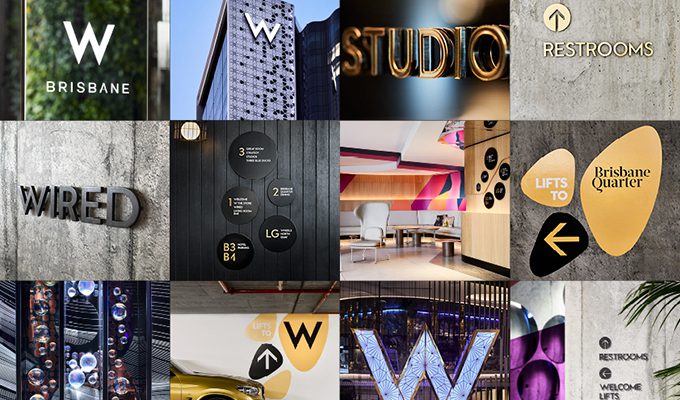By Craig Winterburn.
In semiotics, a ‘sign’ is anything that communicates a meaning that is different, or additional, to the sign itself. Signs can communicate through any of the senses, visual, auditory, tactile, olfactory, or taste. It is a way of seeing the world and understanding how the landscape and culture in which we live unconsciously influences all of us, every day.
Semiotics is an interpretive and subjective emotional experience which is what makes it fascinating. It may have primarily derived from the use of symbols, but it has evolved over time into something more. Probably the most recognisable use of semiotics is in advertising. The use of thought-provoking, message-laden advertising images create emotional responses almost instantly. The two examples below show a visual image, but the meaning is something entirely different.
Signage is another common way semiotics influence our daily perceptions. Whilst working with clients all over the world, I have seen many signage designs that have made me think more deeply about how we experience a place. Designers evoke emotions and responses that can enhance or debilitate a journey.
At Corlette, we constantly explore great ways to ignite the senses through design, pushing the boundaries of semiotics. You can always make a sign something unique, creating a far greater experience for its intended audience. Signage is more than just functional, you can use messaging, form and function to enhance a sense of place, to orient, guide, and engage with people’s emotions and sensory experiences. Good design adds a valuable layer of meaning and memory to a place.
To maximise the emotional impact of design, a carefully considered approach is required. Research is key, otherwise what could be an engaging, memorable experience may become quite the opposite. Collaborating with other consultants to understand and articulate a vision is essential to the success of our wayfinding and signage design process.
Designers often apply semiotics in extremely subtle or subliminal ways, in order to communicate a story, a mood, or a set of values. Our signage programs use recognised symbols and aesthetics to tell stories and convey a meaning or deeper context to audiences. For example, The William Inglis Hotel and Riverside Stableshotel narrative embodies an iconic destination with rural soul, celebrating a passion for equine culture and providing heartfelt hospitality generations in the making. Narrative integration across all design disciplines is the key to success of the hotel’ssignage design. Reproductions of historical Inglis fonts were carefully researched and implemented throughout the signage program. Architectural cues have been borrowed from rural stables and applied to external signage, from typographic details to structural brackets. Surprising ‘horseshoe’ numerals add an element, and feeling, of delight.
On another signage program by Corlette, we see the W Brisbane capture its own unique sense of place.W Brisbane achieves this through the wondrous, Brisbane-centric, hotel narrative of a River dreaming, conceptualized by Australian interior designers, Nic Graham & Associates. Expressed throughout the signage, you see different qualities of water explored through materiality, from highly reflective, still water finishes to tumble-worn, river stone lettering. Water droplet-like glass balls and dichroic surfaces shift and change as guests move past, creating signage that isnot static but as vibrant and changing as the city itself. Signage forms and graphics also reference the dramatic art facade of the building, designed by artist Alexander Knox and realised by UAP. This brings a little of the architecture inside, whilst injecting interiors with a vibrant Queensland palette.
Richard Nordquist recently wrote on semiotics for ThoughtCo. His article explores various forms of semiotics, from historical practices to philosophy, writing, and non-verbal forms of semiotics. To me, non-verbal forms are most interesting in relation to designing experiences; Definition and examples of semiotics
Semiotics has been documented since the mid 1800s, mainly through language. Greater studies have explored its use through various forms. Our consideration of semiotics is through design. How can a sign can be something more than just a form? What emotions, feelings, or thoughts do we want an audience to experience?
The increasingly complex considerations of experiential design require great designers to become sophisticated semioticians, able to adapt designs to suit complex narratives, intergenerational audiences, living languages, and our desire for a greater connection to place.
Featured work
W Brisbaneand Brisbane Quarterwayfinding and signage program by Corlette.
The William Inglis Hotel and Riverside Stables wayfinding and signage program by Corlette.
About the author.
With more than 20 years’ experience in international signage and construction, Craig Winterburn has worked for some of the largest sign companies in Australia and North America. As Business Development Director at Corlette, Craig regularly consults with our global clients on innovation, signage research and development, and manufacturing processes.
Image credits
The Rhino ad was developed at Africa São Paulo by Executive Creative Directors Nizan Guanaes,
Sergio Gordilho, Creative Director/Art Director Humberto Fernandez, and Creative Director/Copywriter
Flavio Waiteman, with photography by Platinum.
The Frontier Post image source


